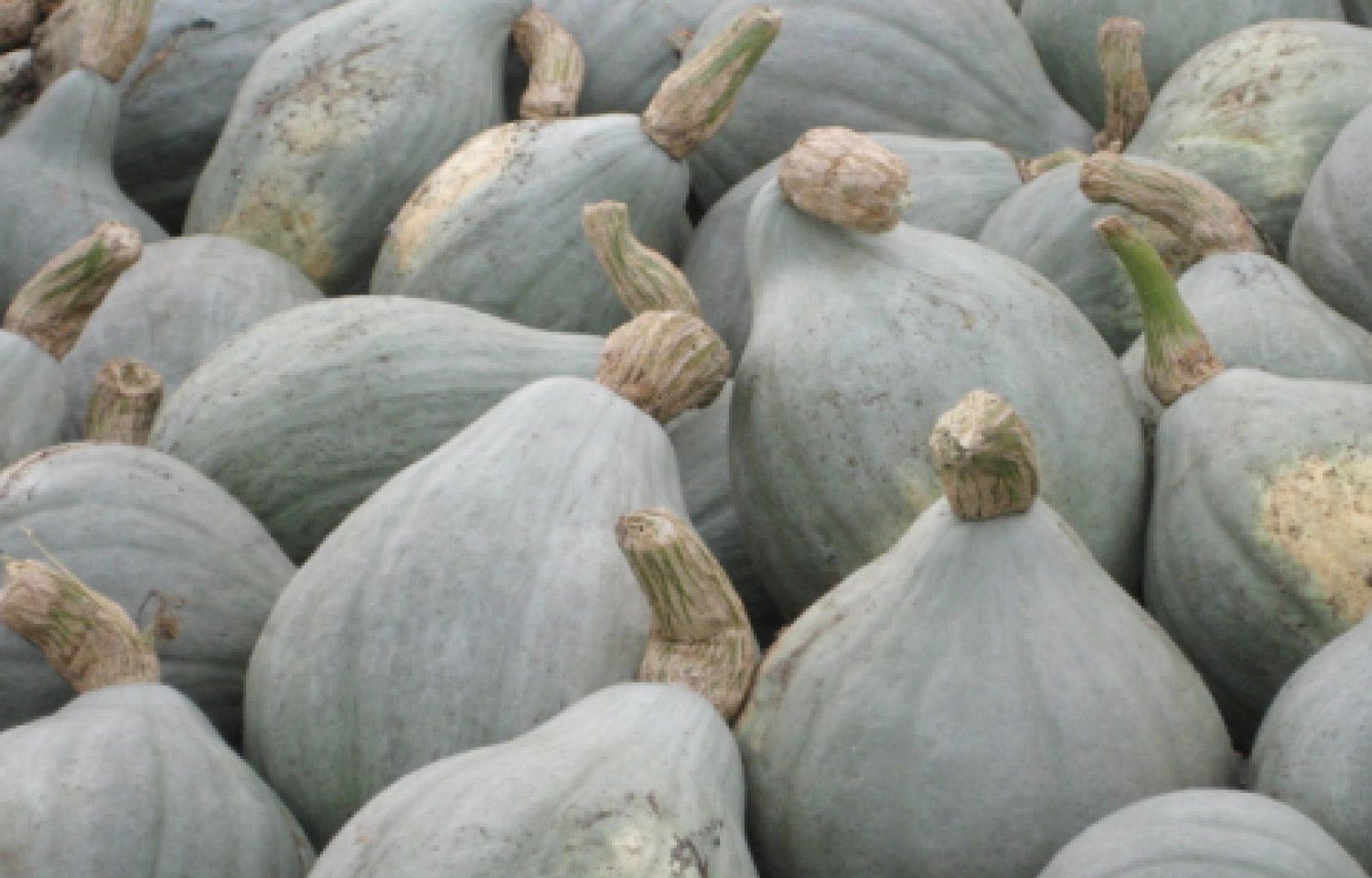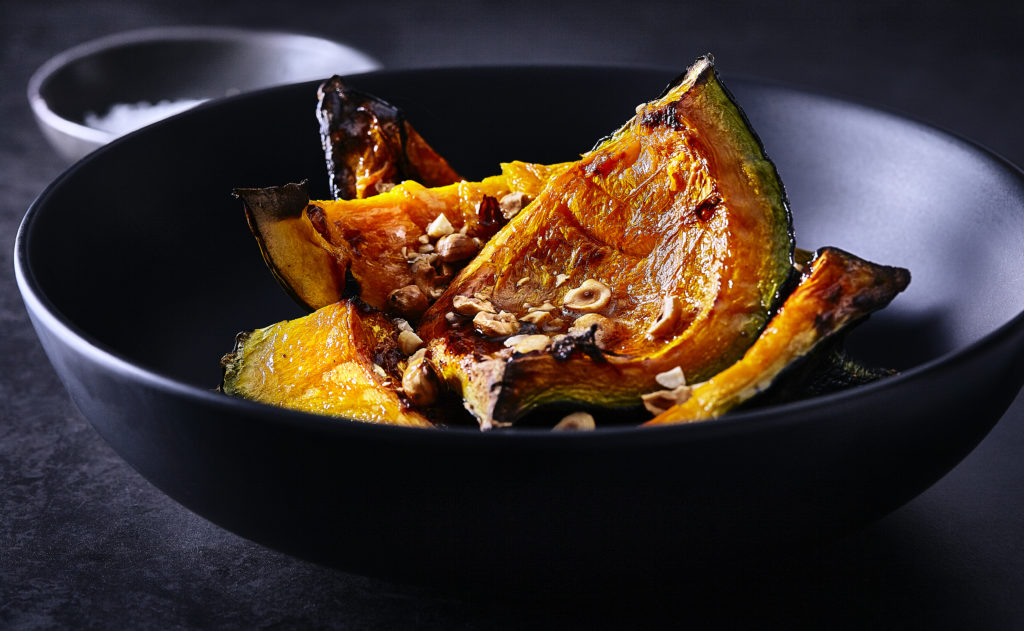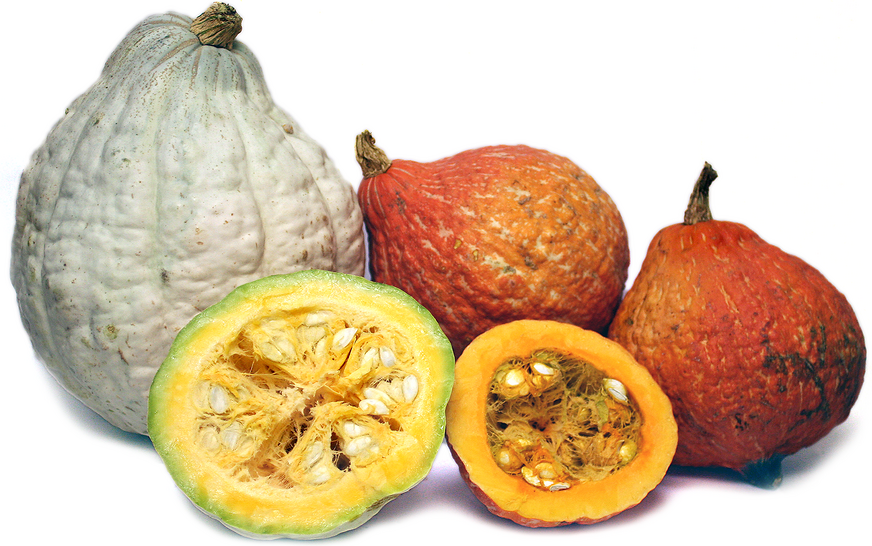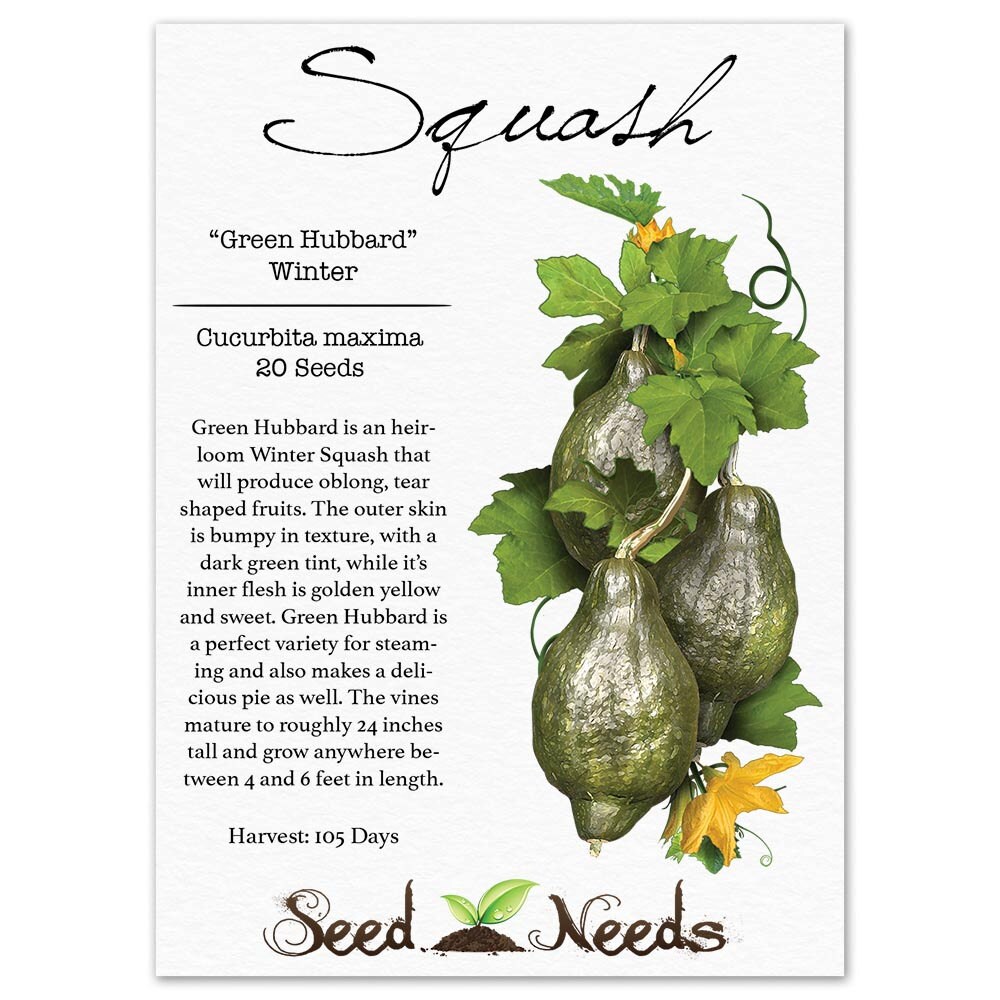
2014 Blue Hubbard Squash are already beginning to run on June 25. The
The Anna Swartz Hubbard squash is an heirloom variety that was cultivated by Anna Swartz of Pennsylvania in the 1950s. She gave the seed to Seed Savers Exchange for commercial introduction in 1999. Connection to Extension. Anna Swartz hubbard is one of the seeds offered by Strawbery Banke Museum through our free seed for education program.

20 Blue Hubbard Winter Squash seeds, Cucurbita maxima
Winter squash varieties are in vine form. So plan accordingly if you are growing a vine. Vines need to be planted about 8-12 feet apart. Plus, almost all squash are fully matured and ready for harvest in 60 days. 4. Water and Fertilize. The final step to planting squash is to water regularly and consistently.

Two Bears Farm and the Three Cubs Growing Blue Hubbard Squash
Cut fruits from vines and handle carefully. Sun cure by exposing fruits for 5-7 days or cure indoors by keeping squash at 80-85°F/27-29°C with good air ventilation. STORAGE: Store at 50-60°F/10-15°C, 50-70% relative humidity and good ventilation. Repeated exposure to temperatures below 50°F/10°C may cause chilling damage.

Hubbard Squash Information Tips For Growing Hubbard Squash Plants
When to Harvest Blue Hubbard Squash. Blue Hubbard mature in about 110 days under ideal conditions. Blue Hubbard squash are ready for harvest when their skin dulls, hardens, & takes on a blueish hue. Like all squash family plants the stems will start to dry up, too. Cut the stem 1-2″ up from mature fruit. Harvest before first frost.

Blue hubbard squash at the market myBackyard
Phonetic Spelling koo-KER-bih-ta MAKS-ih-muh Description. Winter squash or pumpkin is a warm-season annual vegetable vine in the Cucurbitaceae (cucumber) family native to South America.Cucurbita is Latin for gourd and maxima is Latin for largest, because these plants can produce fruits that are very very large.. This large vine trails along the ground or climbs up structures using tendrils.

Hubbard Squash Recipe & Nutrition Precision Nutrition's Encyclopedia
Hubbard Squash plants prefer a soil pH between 5.5 to 6.5. You can test the pH of your soil using a soil testing kit. You can purchase a soil pH test kit at your local garden center or Amazon. If your soil is too alkaline or acidic, it can be difficult for the plants to absorb the nutrients they need to grow. Soil is too acidic or alkaline, and.

Hubbard Squash Asia Seeds
Golden Hubbard squash is an attractive winter squash with a tear-drop shape and a deep orange-red or golden-red shell. The innards of this squash are golden-yellow, with a mild flavor and sweetness th. Once the plants are established, deep, infrequent watering that soaks the top 6 to 8 inches of soil is best. As a general rule, provide 1 to.

Winter Squash Seeds 'Chicago Warted Hubbard'
Remove the skin from each wedge with a paring knife. Dice the flesh into evenly sized squares. Place the squash pieces in cold salted water; bring the water to a boil. Reduce the heat to a simmer.

My parent's 1 Hubbard squash plant. gardening garden DIY home
The Blue Hubbard Squash can grow in USDA zones 8 through 11. Cucurbits are considered a tropical variety, which means they don't take to cold weather that well. That said, you should protect your squash plants from frost with a light cover. Fertilizer. The best fertilizer to use on a Blue Hubbard Squash is aged compost and a 5-10-10 fertilizer.

Baby Blue Hubbard squash seeds West Coast Seeds
Blue Hubbard Squash. Blue Hubbard Squash shows promise as a trap crop for squash bugs and vine borers. For best results, make sure Blue Hubbard seedlings are larger and more mature than zucchini, summer squash, and other cucurbits that you are trying to protect. I am going to try Blue Hubbard squash as a trap crop plant this year.

Vertical Growing (Hubbard Squash) Growing squash, Garden, Green thumb
On average, a mature Blue Hubbard Squash plant can produce anywhere from 3 to 5 squash. These squash can be quite large, weighing between 15 to 30 pounds each. Blue Hubbard Squash plants have a unique growth habit. They typically grow to be about 12 to 18 inches tall, but their trailing vines can reach impressive lengths of 6 to 10 feet. This.

Hubbard Squash Recipes Pinterest
When to Plant Blue Hubbard Winter Squash. When to plant Blue Hubbard Winter squash is easy and quick once the weather warms up. Plant seeds 24 to 36 inches apart, 1.5 inches deep, and in a sunny area with average water. After the frost danger has passed, seeds should be direct-sown and will take 90 to 120 days to mature.

Blue Hubbard Squash Seeds GreenMyLife Anyone can Garden
Planting: To get a jump on the season, start summer and winter squashes indoors 3-4 weeks before the last frost. Sow squash outdoors or set out seedlings when the soil temperature reaches 70ºF (21ºC). Sow seed ½ inch-1 inch (13mm-2.5 cm) deep. Thin successful plants to 36 inches (90 cm) apart in all directions.

Squash Seeds Green Hubbard Cucurbita maxima NonGMO Seeds
Hubbard Squash Care and Storage. Proper hubbard squash care will extend the life of this fruit allowing for storage up to six months. The hubbard will continue to ripen after picking, so do not store near apples, which give off ethylene gas and will hasten ripening and shorten storage time. Store this winter squash between 50 and 55 degrees F. (10-13 C.) at a relative humidity of 70 percent.

Two Bears Farm and the Three Cubs Why You Should Plant Blue Hubbard Squash
Moderate. When to Plant. 3-4 weeks before last frost date (indoors), after soil has warmed to at least 60°F (15°C) and all danger of frost has passed (outdoors) Yield. 2-5 squash per plant. Frost Tolerance. Light frost tolerance; harvest before hard freeze. Hours of Light Needed. At least 6-8 hours per day.

Green Hubbard Winter Squash Seeds (Cucurbita maxima) Seed Needs
Blue Hubbard Squash as a Trap Crop to Suppress Squash Bug. Trap cropping involves growing plants alongside target crops that are more appealing to certain pests, thereby protecting the target crop. It is an important cultural control method within integrated pest management (IPM). Various research studies have shown blue hubbard squash to be an.